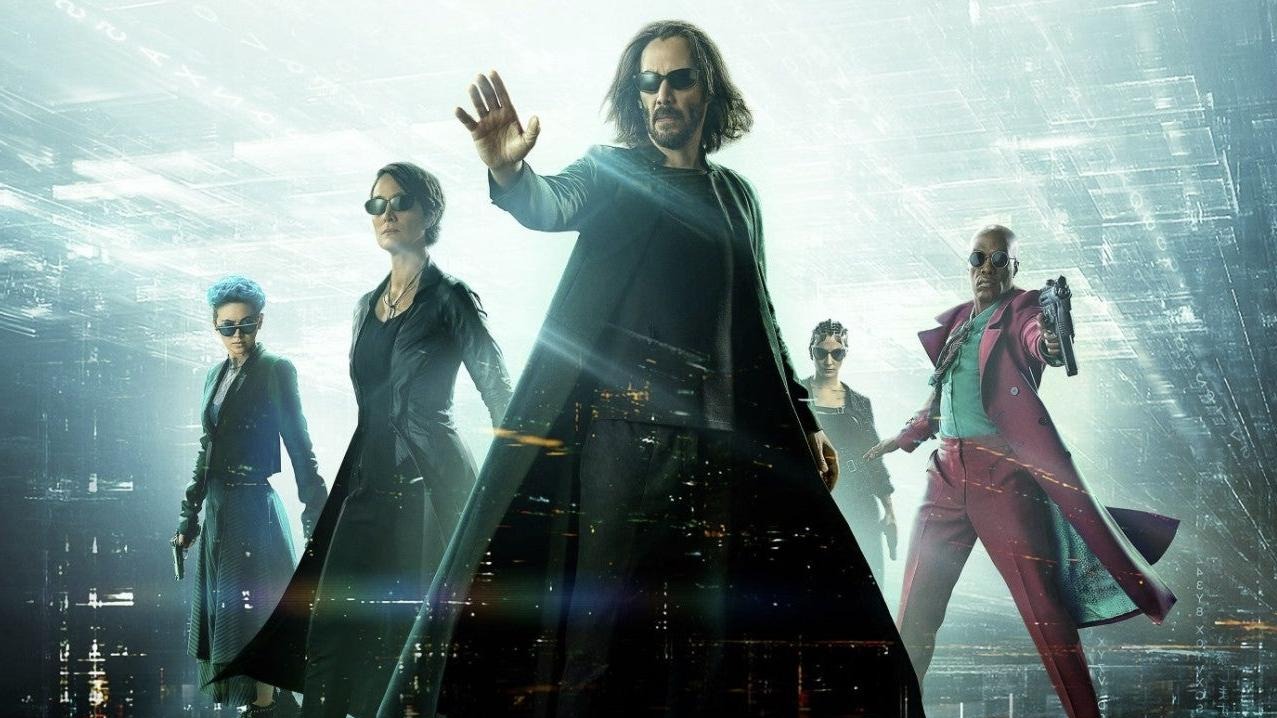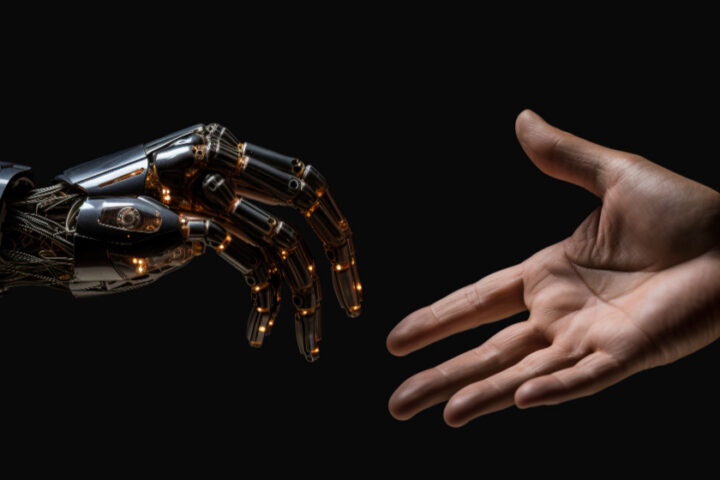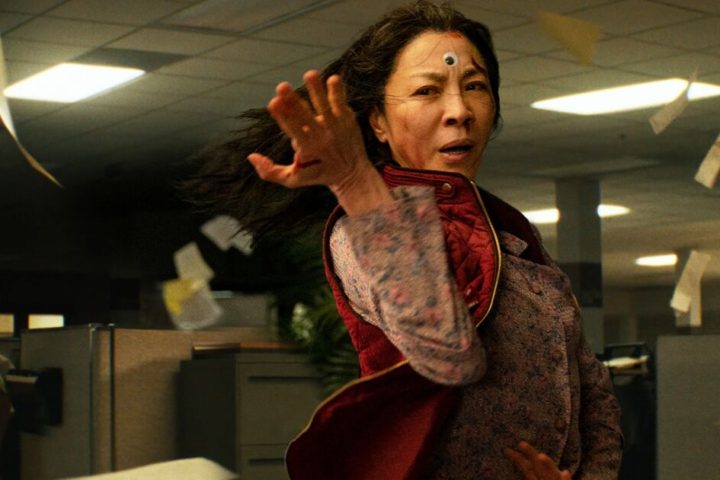Whenever we search for the artistic reference of our era, we might stumble upon the shadow of The Matrix. Filmed in 1999, it portrayed the nascent Zeitgeist of the digital era better than anything. Matrix, beyond all the critiques it received, represented something darker for our times. It became the aesthetic rendition of our defeat. Ideology, in the very form of a movie, had the privilege to draw the contours of our political imagination (Robertson, 2021). In an aestheticized way, the movie captured and modeled the difficult relationship of humans with the sensorial network where they lived, drawing a cyberpunk analogy to Plato’s cave allegory (Zizek, 1999), albeit in a dystopian fashion, typical of the post-globalized world.
But the problem was not only that humans were presented as living within the Matrix. The tragedy was that the grievous conflicts that led humanity to that situation remained. This was the case of the lack of a solution, even in the case of a victory over the machines, that could potentially save the real world. The rebellion against the machine was mainly the fight of the rebel representatives of free will against the grotesque idea of the human farm. Somehow, the distinctive harshness of postmodernity against metanarratives came to life, but in the weirdest form, as a mockery. Rebelliousness was necessary, the ideological enemy, the matrix, was obviously there, but somehow the ones who knew, including the chosen one, ended up resetting the matrix in different ways, as he was supposed to do.
The Matrix Resurrections, recently released, is the confirmation of the mockery it’s always been. Because Matrix, as a movie, and as one especially committed to the idealist war against the symbolic, cannot but repeat itself, endlessly, selling its repetition as the real hope. The starring characters will change it now, again, and leave completely open the possibility of maintaining a struggle whose victory was never meant to be explained. Did someone even think that all humans were meant to be liberated? Did that really matter? Were they supposed to survive after liberation? Would wars emerge again? Would the conditions for the emergence of the IA be reproduced in a post matrix world? In the end, what is supposed to be an anti-matrix resistance, turns out to be fueling the emergences of the matrix, at different levels, mostly because there is no idea of a post matrix (vaguely present in Niobe’s garden).
It makes perfect sense that The Matrix Resurrections offers no solution at all. It was never meant to do it. Matrix was never a political plan, but the artistic expression of the hope, and in its sequels, of the frustration of a generation.
It makes perfect sense that The Matrix Resurrections offers no solution at all. It was never meant to do it. Matrix was never a political plan, but the artistic expression of the hope, and in its sequels, of the frustration of a generation. But even this, as a hope, faced the terrible obstacle of facing the real world parallelisms. In the post-2000 world, all ideological groups behaved with the same pattern, acting as if they had the red pill (the access to the truth), while the real crumbled, first in the Middle East, and later, in 2008 (Varoufakis, Halevi, & Theocarakis, 2011, p. 6) and 2020 (not to mention the environmental crisis). Feeling itself with immediate access to the Truth is not an exclusive trait of the right-wing trolls, as affirmed by Stevens (2021). It has been the way the ideological landscape has been imagined in postmodern times. We live in an age of aestheticized sectarianism, even more, after social media, where the “real” remains secondary.
Consequently, the matrix is a metaphor of capital itself, which is the underlying reality to ideology, as it said in jest within the meta scene discussing Neo’s game. But capital, as the matrix, does not need to be believed in in order to function, it’s a completely alienated process. And in its most recent superstructural materialization, as the fractioning of the collective subjects and the defense of the individual free will as the fundamental tenet of human life, capital benefits itself of portraying the struggle as the radical fight that feeds it in the long run, that enters in its plans. Sion (or Io), as any other particular and closed identities or collectives in our real world, can’t take down the Matrix, as any of the myriads of micro identities that emerged in the digital era can’t pose any real threat to real capital, but only work as a mechanism to diversify commodity and adapt “inclusive” patterns of consumption, to “keep the system running”. But every particular group feels like the real resistance, like the red-pilled one notwithstanding.
The political imagination of an era that fools itself as fighting capitalism while reproducing it at every single manifestation is the best condition that generates the kind of consumer the Matrix can have. Even if threatened by climate change, pandemics, real and prospective wars, and the possible problems of IA, humanity, considered as a vague concrete universal in this case, does not think in terms of post-capitalism. Therefore, the solution is always free will making its way to a devastated world, the desert of the real, that will need fixing.
However, there is no epic in the end. On the contrary, since they are the embodiment of free will as abstract freedom, the authentic postmodern digital citizen, and model of artistic or political activist of our neoliberal world, they clearly expressed everything they are willing to do in order to really overcome ideology (and what the last two decades have shown them capable of): nothing.
The finale of the fourth movie gives us a good analogy of the ideological climate of our time. Neo and Trinity, standing in a position of bargaining with this oppressive Matrix, with the leverage of a victory, choose to recur to the idea of a vague and hypothetical “another chance” (which might be effective or not). However, there is no epic in the end. On the contrary, since they are the embodiment of free will as abstract freedom, the authentic postmodern digital citizen, and model of artistic or political activist of our neoliberal world, they clearly expressed everything they are willing to do in order to really overcome ideology (and what the last two decades have shown them capable of): nothing.
The amazed face of Neil Patrick Harris might convey the dramatic intrigue of a frightened villain. But ideology, or the matrix, is not threatened, it never is by these “chances” that only guarantee the repetition of the attempts with no utter meaning, because they are not meant to have the latter. However, the analogy with the political world is drawn here with stunning accuracy.
The obvious crisis of capital in recent years, as well as all the symptoms of deregulation and problems aforementioned, have aroused the rage and rejection of millions, organized vehemently against the different manifestations of capitalism. The radicalism of the discourse that is anti-capitalist (or the blue pilled “pro-capitalist”), which reemerged under the circumstances of Covid 19 reminds us of the ultimate lesson of Matrix. Matrix, or capital, in its ultimate ideological form, can’t be destroyed, smashed, if it’s to be faced, it must be overcome, but even then, it’s a post, not an anti-scenario. Portraying it as the “enemy” is a victory of capital itself, which disguises itself as the very forms that aim to kill the obsolescent manifestations of its former self.
Capital is fundamentally alive even in the most vocally radical “anti- “ movements, nations, or persons. It doesn’t care about their opinions, as long as human workflows are in the same commodified circulation. And humans can’t objectively conceive a worldwide present without any presence of capital, as any of the solutions of the real problems can’t be thought excluding it, the same as humans, who, in the event of really planning to fix their world, would need of the machines to make the planet livable again or any conceivable political future, as the city of Io in the latest movie attempts to show. The anti-matrix is the condition for the reproduction of the matrix, and by insisting on the artistic escape (“to paint the sky”), it denies itself the hardest questions that might give the most difficult answers, while assuring the cosmetic changes that they are willing to make.
References
Robertson, D. (2021). “The Matrix resurrections” tries to Un-Redpill America. Politico. https://www-politico-com.cdn.ampproject.org/v/s/www.politico.com/amp/news/magazine/2021/12/23/matrix-resurrections-review-red-pill-america
Stevens, D. (2021). The Matrix Resurrections takes back the red pill. Slate. https://slate.com/culture/2021/12/matrix-4-resurrections-hbo-keanu-reeves-red-pill
Varoufakis, Y., Halevi, J., & Theocarakis, N. (2011). Modern Political Economics. Making sense of the post-2008 world. London: Routledge.
Zizek, S. (1999). The Matrix, or, the two sides of perversion. Inside the Matrix: International Symposium at the Center for Art and Media, Karslruhe. https://www.lacan.com/zize-matrix.htm





